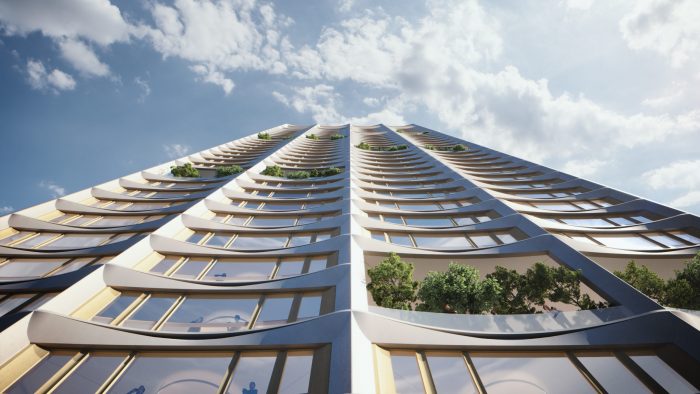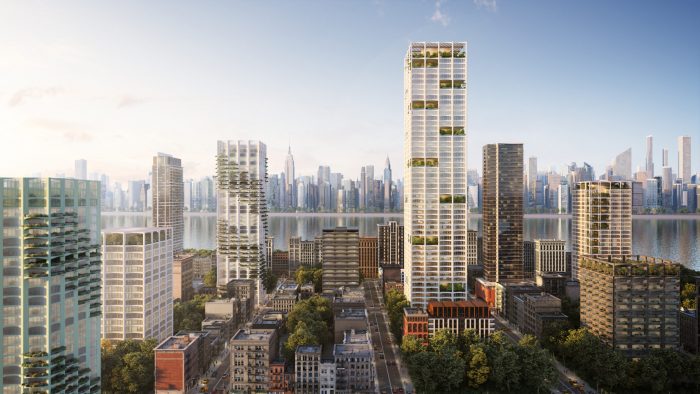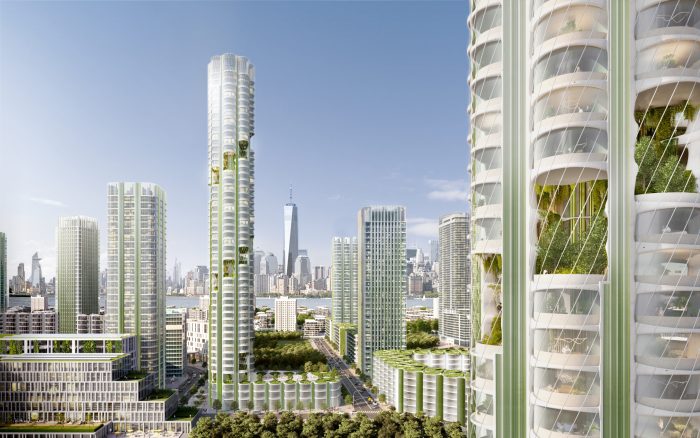“Urban Sequoia NOW,” a building model from SOM to expunge carbon from the air
Earlier this week, at the COP 27 UN Climate Change Conference in Sharm EL- Sheikh, Egypt, Skidmore, Owings & Merrill (SOM) revealed an update to its Urban Sequoia project introduced at COP 26, introducing Urban Sequoia NOW. Developed by a collaborative incorporative team at SOM, the building’s design can be constructed quickly and sequester carbon throughout its lifespan. Presented by Partner Chris Cooper in the Buildings Pavilion Auditorium.
“Urban Sequoia thinks about cities as ecosystems, as living, breathing systems that can be reorganized to significantly reduce carbon emissions, reframing the built environment as a solution to the climate crisis,” Mina Hasman, the firm’s Sustainability Director, said in a press release.
“We need to reduce carbon dioxide in the atmosphere through built environment design. SOM Partner Chris Cooper was on hand to present his firm’s refined design for a carbon-sequestering building that can be used as a weapon in the fight against carbon emissions globally, three-quarters of which are generated from urban areas alone. Cooper added that going beyond net zero is necessary to prevent climate change.
Despite some considerably less-marketable obstacles to its effective implementation, the technology for carbon sequestering has come a long way in its development to offer itself as a viable answer to the problem posed by the need to accommodate the explosive growth of population in cities that is projected to take place by 2060.
What traditional constructionist do is that they build buildings out of structures and then layer those structures on top of each other. Inverting this process, SOM created high-rise structures by integrating their MEP systems into an expanded set of floor plans. As a result, we’ll have removable ceilings, saving materials usage.
The design of SOM will absorb more than 300 percent of the amount of carbon emitted during construction and operations during the building’s lifespan of 100 years instead of 60. It is possible to modify the method used in various building designs and use the most advanced materials, such as bio concrete and solar glass, to achieve a ‘beyond net zero’ result.
Mina Hasman clarified that by converting urban areas into gardens, designing carbon-absorbing landscapes, and retrofitting streets with other carbon-capturing technology, SOM could sequester up to 120 tons of carbon per square kilometer.
‘If the Urban Sequoia were to become the baseline for new structures, our industry could realign itself into a key player in the fight against climate change, Mina Hasman, Senior Associate Principal, explains. “We imagine a world where the first Urban Sequoia will inspire the design of a whole neighborhood – feeding the city ecosystem with carbon and repurposing it locally to combat climate change.
He also added that if every city worldwide could build Urban Sequoia, cutting up to 1.6 billion tons of carbon from the atmosphere with immediate focus and investment in SOM’s prototype, we could start this process now and build the first Urban Sequoia.




